Green and White Ash Field Protocols






WE PROVIDE:
Stuff sack Bag with silica desiccant*
Alcohol kit for cleaning*
Measuring tape*
Saw-toss tool*
Envelopes for samples*
YOU PROVIDE:
Smartphone*
Binoculars (very helpful)
Pocket knife or scissors (very helpful)
Use the sign up map to identify a park you’d like to visit. Read the permit requirements (some parks require you to call ahead before visiting). Previously logged ash observations are indicated on the map, which will help in your search (but are not required).
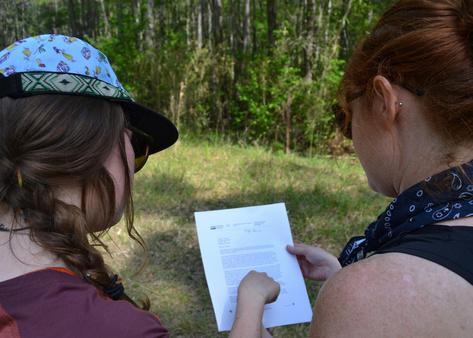
Fill out the form to sign up for your permit. If no further action is needed, it will be emailed to you immediately. Download the permit to your phone or print it to carry with you.
Make sure you've read the permit thoroughly and are following the requirements. Verify the tree species and maximum number of trees to be sampled, as well as if anyone needs to be notified ahead of your visit.
Park rangers are very friendly, knowledgable, and eager to help! Call ahead and ask if they know where ash trees are located. Sometimes they will even walk you there themselves!
Make sure you let them know you have a research/collection permit.
GOAL: Sample 15-40 ash trees per location. If you find less than 15 trees, you will submit a record for absence data.
Ask around! Are there any online groups that can help you locate ash trees? Ask them! Local knowledge is the best source, and it’s a great way to spread awareness about the project.
You can also use an app, iNaturalist, to guide you. Search for previously logged ash trees using the Explore feature in the app, and navigate to the park you want to visit.

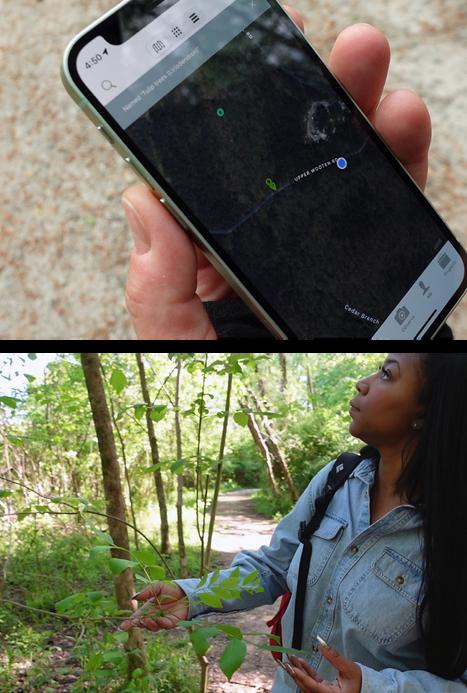
Ash trees aren’t usually the dominant species in a forest. They may be in stands or spread out. Check along streams, creekbeds, ponds and lakes for the best chance of spotting an ash tree.
Green ash is widely distributed, prefers bottom lands with moist soil.
White ash prefers moderately well-drained soils from sea level up to 4,000 ft. Both love being near water sources.
There are a few ways to tell the difference between green, white or other species of ash, but it is incredibly challenging.
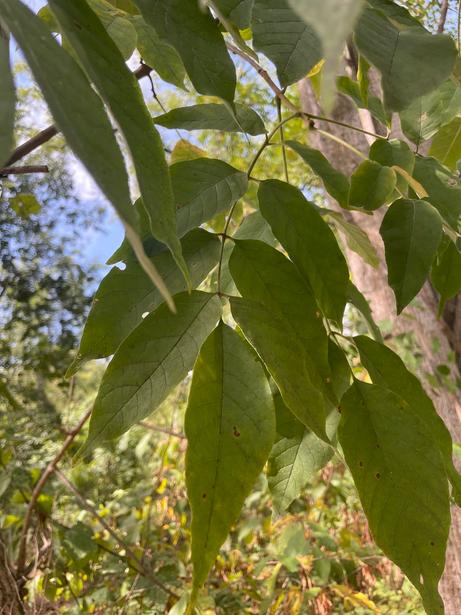
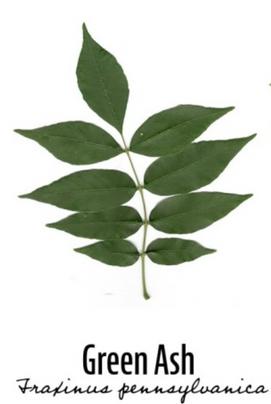
Can you guess which species of ash this is? Neither can we! DNA extraction and analysis will help with this once samples are brought back to the lab.
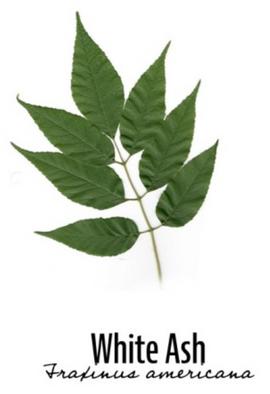
On larger, mature ash trees, bark ridges form diamonds. Young twigs and branches are mostly dark with a nearly smooth feel. Saplings (young, small trees) are smooth and sometimes green.
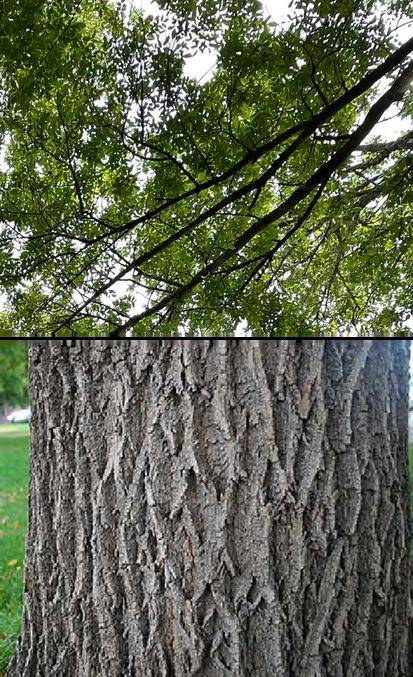
Look for trees with compound leaves. Both green and white ash trees have 5-9 leaflets per compound leaf (most commonly 7).
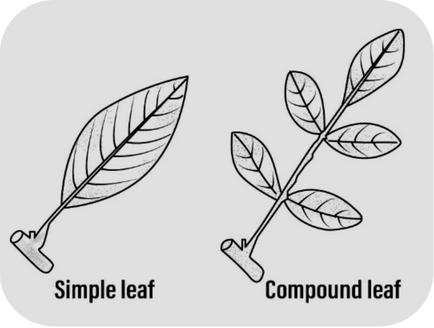

Ash leaf with 7 leaflets. Not all trees will have seeds.
Lateral buds
Leaves, leaflets and branches all grow in an opposite branching pattern.


Opposite leaf pattern.
Opposite branching pattern.
Caution: A pattern may appear to look alternating when a leaf or branch has fallen. Confirm with a scar on the side with a missing leaf or branch.

Step 1: Yes
Check the bark.
Is this a mature tree?
(Let’s check the leaves anyway.)
Step 2: Check the leaves.
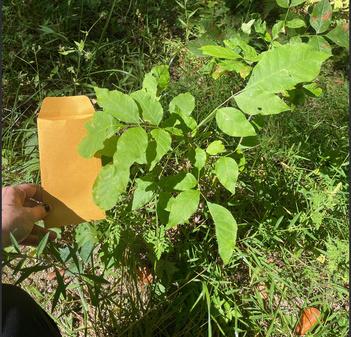
(These may be hard to spot at first , but can be sampled.)
Go to Step 2.
Do you see a diamond pattern in the bark?
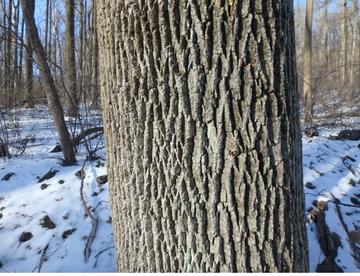
Are the leaves compound?

Not green or white ash.
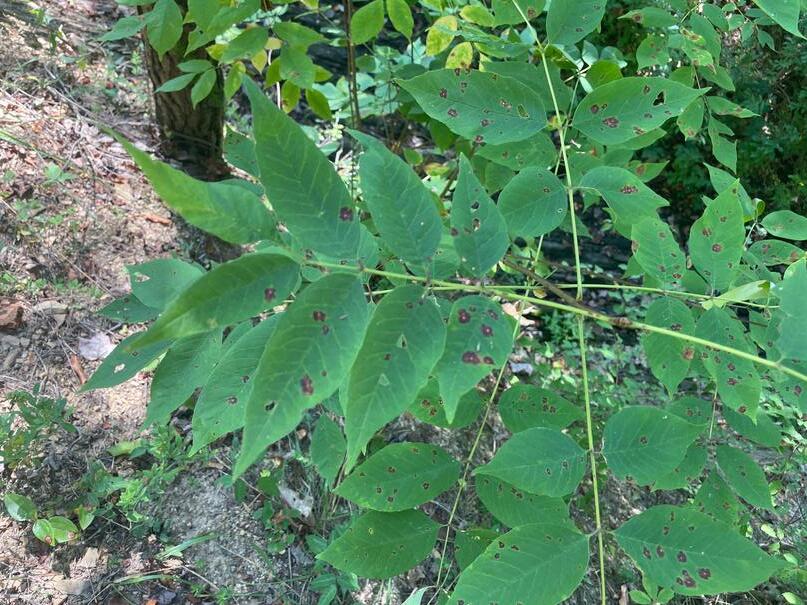
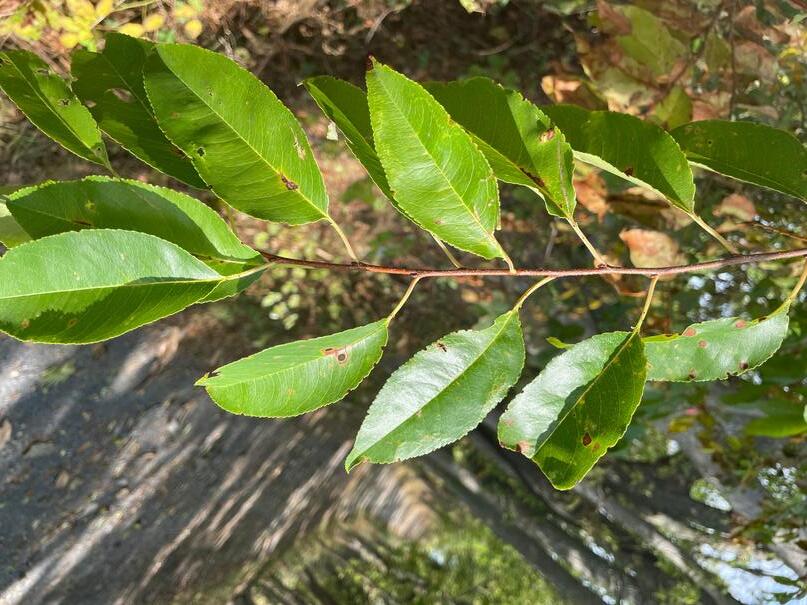
Step 3: Check the leaf pattern.
Are the leaves opposite pattern?



Step 4: Count the leaflets.
ALTERNATE
Not green or white ash.
7 LEAFLETS
Are there 5-9 leaflets?
20 LEAFLETS
Not green or white ash.
Step 5:
Check the branch pattern.
Are the branches opposite pattern?
Pro tip:
Most likely a green or white ash! You are ready to sample.
Not green or white ash.
Watch out for hickory! It is a common lookalike with alternate branches.
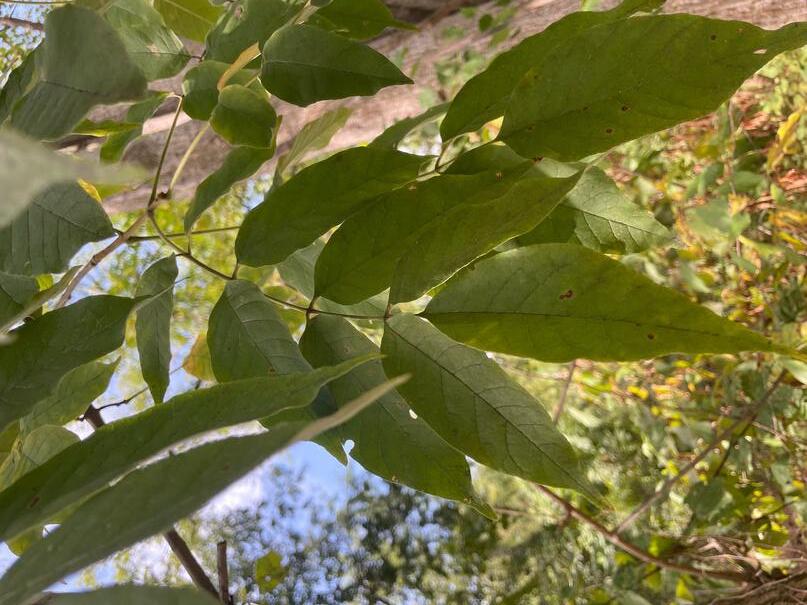
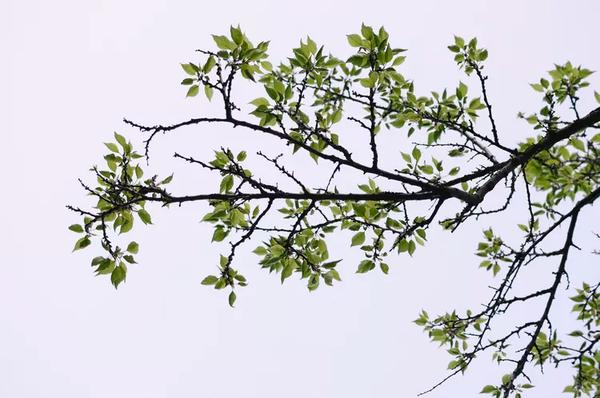

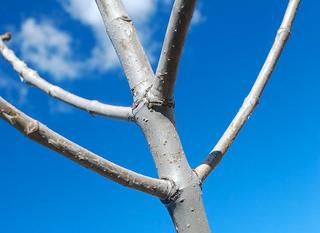
Look around the area before you begin. Are there 15-40 ash trees or saplings nearby?
If there aren’t at least 15 trees/saplings to sample, you will submit a survey for “absence data.”

Steps:
1. 2. 3. 4.
Open the Survey123 app. You can sign in or select “Continue without signing in.”
Select "Tulip Poplar and Ash Survey." Select "Collect."
Follow the survey prompts.
Survey Notes:
Current location: Use the target icon in the upper left corner of the map to increase accuracy to +/- a few meters. Tap again to stop.

We know it’s repetitive to enter the same intro questions for each survey, but this helps with data accuracy. We’re working on ways to make this experience better, but thank you in the meantime!
Use airplane mode while collecting data to save battery. Close the app when you aren't actively entering data.
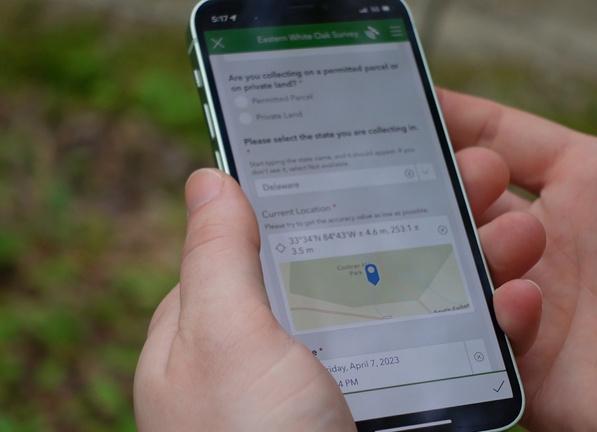
All tools arrive in your gear kit clean, but must be cleaned between each use.
With die-off due to emerald ash borer infestation actively occurring, our partners want to know if the tree you sample is actively reproducing and worth returning to for potential seed collection. Therefore, you will report on samaras and sapling statuses in the survey.

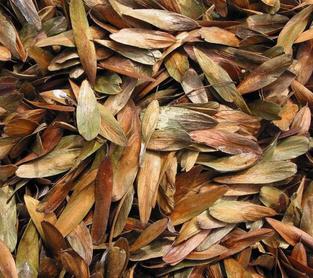
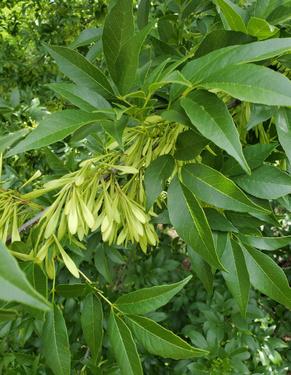
To prevent the spread of forest pathogens, use the alcohol dropper to drip along the braided metal saw, pocket knife or scissors (anything used to cut the tree). Use alcohol swabs to wipe.

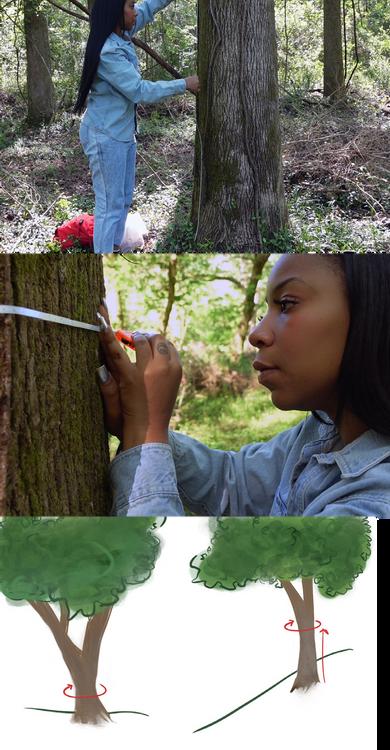


Step 1:
Use the measuring tape to find 4.5 feet (54 inches or 137 centimeters) from the base of the trunk.
Step 3:
Step 2:
Check to be sure you report centimeters. Wrap the measuring tape snugly around the tree, make sure it is level.
If the tree has multiple trunks, measure below the split, at the narrowest portion. If the tree is on a slope, measure from the uphill side.
If you can easily reach the branches and leaves, you may collect what is needed. If the branches are out of reach, you will need to use a different method.
If the branches are out of reach, you will need to use the saw-toss tool. Look for a small branch that you can toss the cord over. You will aim for a branch that gives you no more than what you need for sample collection.

The saw-toss tool can only saw through twigs not much thicker than a pencil. PRO TIP

Step 1:
Tie one end of the cord to something small and heavy that you can toss: a rock, hefty stick, or a water bottle work well. Make sure the cord is coiled loosely at your feet, so the cord can follow your toss easily into the air.


Step 2:
Aim for a crux, where one twig joins a larger branch.
Step 3:
Toss! We’ve had more success with underhand tosses, but try whatever works for you. It may take multiple tries! Once your line is over the branch, carefully pull the weighted side down until the metal part of the tool reaches the branch.

Step 4:
Keep tension on both sides of the saw and move the metal chain back and forth over the twig. Once the metal bites into the wood, keep the chain moving in a sawing motion.
Continuous movement helps to avoid getting the saw stuck. Watch for the falling branch!
Separate 2 leaflets from the compound leaf and collect 5 buds.
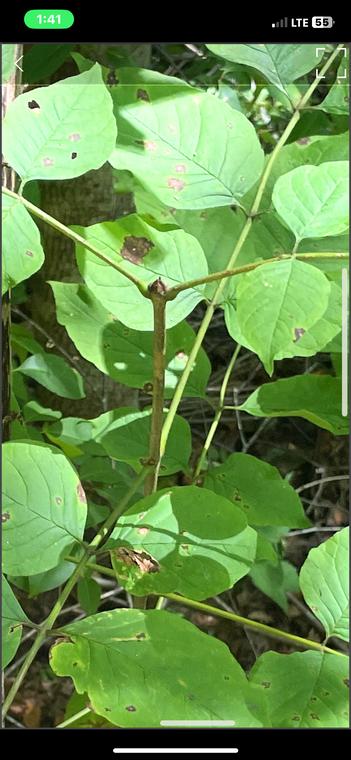
Terminal bud
Lateral/ axillary bud
You will find a "lateral bud" at the base of a leaf, not at the base of a leaflet.
Use your fingers (or pocketknife, scissors, etc.) to snip off approx. 3 inches of twig containing each bud.
Terminalbudsareattheendofastem andlateralbudsareonthesidewhere theleafletemerges.Botharegoodfor sampling, but terminal buds have moreDNAforourpartnerstosample. Saplings may not have very many buds!Trytocollect5budstotal-either terminalorlateralbudsareokay!
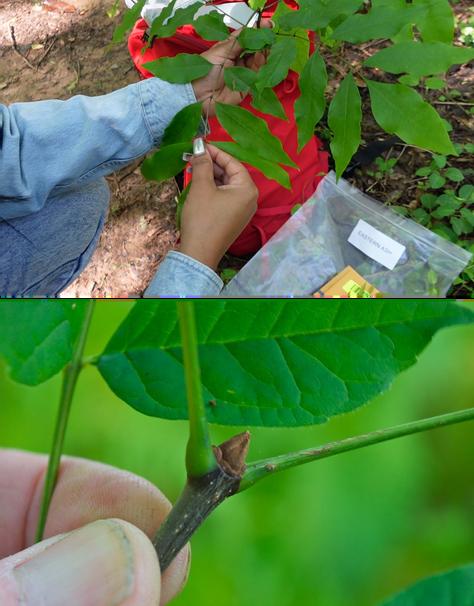

Scan the barcode on one of the sample envelopes. Take photos of samples with the barcodes visible.
Terminal bud
Put all samples from one tree in one envelope. It is okay to tear or fold leaves to fit.
Do not seal the envelopes. Put them in the bag with desiccant.
Take a photograph of the tree from about 20 ft (6 meters) away. Have your partner stand next to the tree or place a pack on the ground for scale.
Record whether there was anything notable or unusual about your sample collection, or any unique characteristics about the tree and where to find it. Examples: Split trunk, height of large limb, a lightening scar, rotted area, distance and direction from a road or other marker.

Tap the check mark on the bottom right-hand corner of the survey in your app. Choose "Send Later" if you aren’t in cell service or don’t want to use data. Send them later using the "Outbox."
Remember to refer to the “After Adventure” section of your training to learn how to pack up and send back samples and gear.
Goal: 15-40 unique ash tree samples in a population.
You are sampling a population of green and white ash trees for genetic analysis by our scientific partners. Sampling along a line or transect (rather than a spiral or other shape) gets the broadest genetic diversity in a population.

Don’t stop at 15, the more trees sampled the better if they are available!
Remain in the same forested area (don't cross major geographic features like a mountain) and you'll be sampling one population.
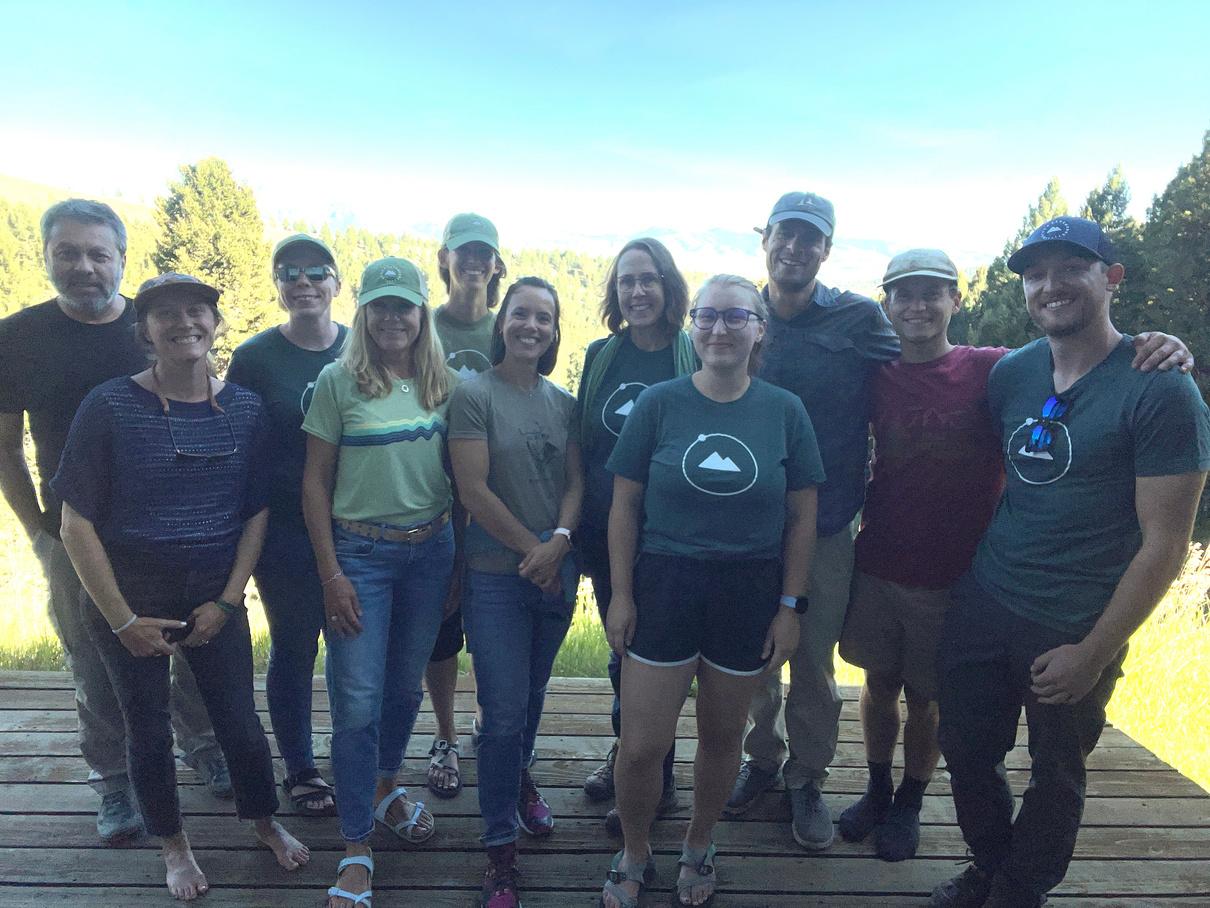
Once you are in a safe situation, after the emergency, alert Adventure Scientists staff about the incident by contacting: (406) 579-9702. ONLY contact this number if you are reporting an incident.
SHIP ALL SAMPLES & GEAR back to Adventure Scientists
214 E Mendenhall St, Suite 203
Bozeman MT, 59715
Have project-related questions?
timber@adventurescientists.org
